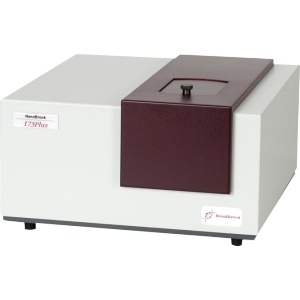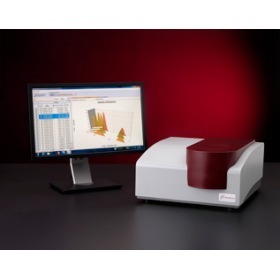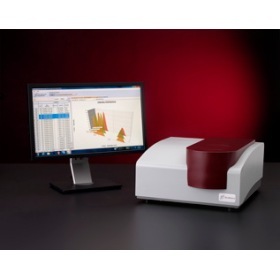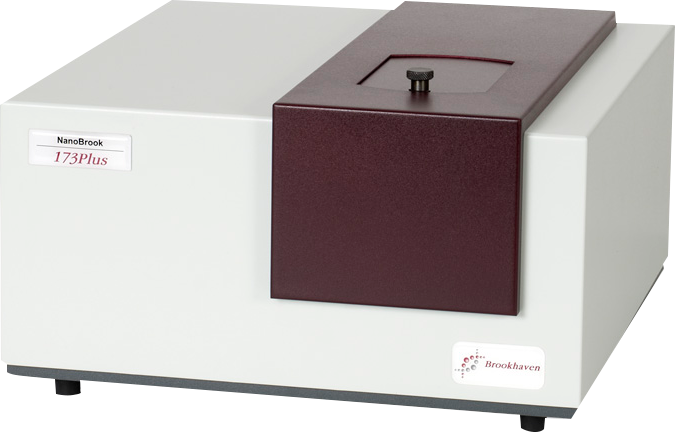ZetaPALS Zeta电位测量应用案例-5
2014/09/10 08:59
阅读:0
分享:方案摘要:
下载本篇解决方案:
更多![]()
NanoBrook产品应用-12-ZetaPALS
文献名: Structural, morphological and optical properties of Bi NPs obtained by laser ablation and their selective detection of L-cysteine 作者: Ramon Gabriel Teixeira Rosaa, Celso de Araujo Duartea , Wido Herwig Schreinera, Ney Pereira Mattoso Filhoa, Arandi Ginane Bezerra Jr.b, Andersson Barisonc, Fernanda Maria Marins Ocamposc a Departamento de Física, Universidade Federal do Paraná Centro Politécnico, CP 19044, 81531-990 Curitiba (PR), Brazil b Departamento Acadêmico de Física, Universidade Tecnológica Federal do Paraná, 80230-901 Curitiba (PR), Brazil c Departamento de Química, Universidade Federal do Paraná Centro Politécnico, CP 19081, 81531-990 Curitiba (PR), Brazil 摘要:In the present work we show the results of the investigation of the properties of bismuth nanoparticles (NPs) obtained by the laser ablation in water. The samples were characterized by various techniques: UV/vis spectroscopy, dynamic light scattering, transmission electron microscopy, X-ray photoelectron spectroscopy, X-ray diffraction, nuclear magnetic resonance and zeta potential. The NPs were metallic and surface oxidated, exhibiting absorption peak at 257 nm due to the surface plasmon resonance. The interaction between the NPs and various amino acids was studied and revealed a selective sensibility to cysteine on a range of concentration from 80 to 720 μM, which we attribute to a dimerization of cysteine to cystine probably complexed to the nanoparticle surface by electrostatic interactions, leading to the modification of the NP absorption spectrum. 关键词:Bismuth; Nanoparticles; Laser ablation; Cysteine
2015/04/16
NanoBrook产品应用-16-ZetaPALS
文献名: Preparation and application of magnetic graphene oxide coated with a modified chitosan pH-sensitive hydrogel: an efficient biocompatible adsorbent for catechin 作者: Hassan Sereshti, Soheila Samadi, Shohreh Asgaria and Maryam Karimia Department of Chemistry, Faculty of Science, University of Tehran, P.O. Box 14155-64555, Tehran, Iran 摘要:In the present study, graft copolymerization of acrylic acid sodium salt (AAS) onto O-carboxymethyl chitosan (O-CMCs) produced a highly hydrophilic and pH-sensitive hydrogel polymer of O-CMCs-g-AAS with a porous surface morphology. The grafted chitosan copolymer was coated on magnetic graphene oxide (MGO) and characterized with TEM, SEM, and FT-IR techniques. The prepared nanocomposite, [O-CMCs-g-AAS]/MGO, was successfully used as an efficient and biocompatible adsorbent in magnetic solid phase extraction (MSPE) coupled with gas chromatography-mass spectrometry (GC-MS) for preconcentration and determination of catechin in tea beverages. The influence of the main parameters affecting the quality of the coating process was investigated and optimized using a response surface methodology. Under the optimum conditions, the adsorbent demonstrated a satisfactory adsorption capacity (27 mg g?1) for catechin and good linearity in the range of 0.005–5 μg mL?1 with a determination coefficient (R2) of 0.9987. The limit of detection (LOD) and limit of quantification (LOQ) were 0.001 and 0.003 μg mL?1, respectively. The relative standard deviation (RSD) was 4.1% (n = 5, C = 0.5 μg mL?1).
2015/04/10
Study of Protein Hydrodynamics with Light Scatter-ing: Size and Charge of Lysozyme
Proteins are not only important nutrient source for human society, but also play a crucial role in devising various protein-based therapies for many terminal diseases [1]. Therapeutic proteins are usually administrated by the parenteral route. Their dosage form needs to be formulated either as a solution, a suspension or a reconstituted solid dosage form. Therefore, for protein therapeutic products development, protein hydrodynamic behavior in solutions or suspensions is proven to be much more relevant than its isolated and denatured characteristics revealed via advanced microscopy tech-niques. This can be manifested as either protein size monitoring for QC purposes of its purification processes or their charge property control for optimized formulation stability. The critical requirements for these applications often include, but not limited to, non-invasive (in-situ) nature of measurement techniques, easy-of-use and rapidness of tests. Laser light scattering techniques satisfy these require-ments and provide vital access to the hydrodynamic characteris-tics of biological macromolecules in their native application envi-ronments [2]. Their diffusive displacement (“Brownian” motion) can be quantified as diffusion coefficient with a dynamic light scattering measurement. In turn, their hydrodynamic radius can be calculated. When placed under an electric filed, the charged proteins undergo a uniform translational movement, the so-called electrophoretic motion or electrophoresis. It results in a Doppler phase/frequency shift of the light signal scattered from the moving proteins, which can be quantitatively evaluated with a carefully designed electrophoretic light scattering experiment. From the measured phase/frequency shift, the charge status of proteins can be extracted.
2015/03/12
The Structure-Function Relationship of PAMAM Dendrimers as Robust Oil Dispersants
PAMAM dendrimers have recently been investigated as efficient and biocompatible oil dispersants utilizing their encapsulation capacity; however, their high cationic charge density has been shown to be cytotoxic. It is therefore imperative to mitigate cationic charge-induced toxicity and understand the effects of such changes. Presented here is a synergistic experimental and computational approach to examine the effects of varying terminal surface charge on the capacity of dendrimers to disperse model liner, polycyclic aromatic, and hybrid hydrocarbons. Uncharged dendrimers collapse by forming intra-molecular hydrogen bonds, which reduce the hosting capability. On the other hand, changing the surface charges from positive to negative greatly shifts the pKa of tertiary amines of the PAMAM dendrimer interior. As a result, the negatively charged dendrimers have a significant percentage of tertiary amines protonated, ~30%. This unexpected change in interior protonation state cause electrostatic interactions with the anionic terminal groups, leading to contraction and a marked decrease in hydrocarbon hosting capacity. The present work highlights the robust nature of dendrimer oil dispersion and also illuminates potentially unintended or unanticipated effects of varying dendrimer surface chemistry on their encapsulation or hosting efficacy, which is important for their environmental, industrial, and biomedical applications.
2015/03/12








